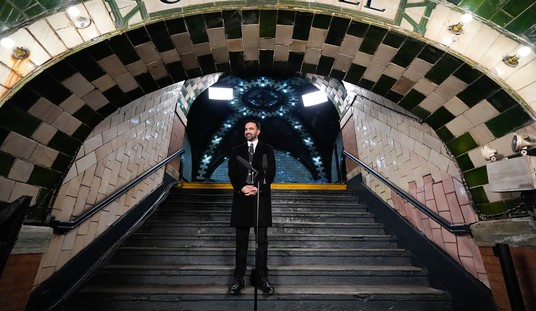In the early morning of July 4, a flash flood emergency was issued for Austin and San Antonio by the National Weather Service in Texas. According to the NWS, a flash flood emergency is "exceedingly rare" and is only used when "there is a severe threat to human life and catastrophic damage."
Less than two hours later, the Guadalupe River rose from 7.67 feet to 29 feet. The flash flood happened quickly. Homes in Kerr County, the most severely affected area, were completely submerged in water. As of this writing, at least 111 people are confirmed dead, including dozens of adults and children.
This is not the first time that Texas has suffered tragic consequences from rapidly rising waters. During a 2015 Memorial Day tragedy, 13 people died and 400 homes were destroyed. In 1987, the Guadalupe River rose to 29 feet, killing 10 teenagers in a bus. The Texas Hill Country is exceedingly vulnerable to floods. It has steep rolling terrain with thin drought-affected soil over limestone, which amplifies flood surges. The Hill Country is known as "Flash Flood Alley" because it experiences frequent flooding.
Heartbreaking stories of the present-day calamity continue to emerge. Among the dead were two second graders, described as "best friends," from Highland Park. Two sisters, 13 and 11 years old, perished in the floods. A high school soccer coach and his wife died too, along with so many others.
At Camp Mystic, a children's sleepaway camp, 27 have been confirmed dead, including campers as well as counselors and the camp director, who reportedly died trying to save the lives of the children. Camp Mystic was an unbelievable tragedy. The camp, at the time of the flooding, hosted approximately 750 campers and was located along the Guadalupe River in Hunt, Texas. The cabins where the victims were located were situated less than 500 feet from the Guadalupe River bank, and most were sleeping in their cabins when the floodwater struck at around 3 a.m. A tragic and shocking way to die.
Recommended
The response to the flooding has been what you expect following such a massive tragedy. Over 1,000 personnel are currently involved in search and rescue operations, with more than 400 first responders from 20 agencies in Kerr County alone. Additionally, over 100 vehicles and K-9 units are actively searching, and the search area has expanded to include other counties as well. Of the 850 people rescued or evacuated, over 150 were rescued by helicopter.
Unfortunately, this tragedy, while certainly unavoidable, could have been mitigated. Kerr County's first emergency alert didn't occur until just hours before the flooding occurred. In fact, many residents reported receiving phone alerts hours after the flooding had already happened. And, of course, rural areas that lacked cell phone service were unable to receive communications. And seven years ago, flood warning sirens were considered in Kerr County but were not implemented due to budget constraints. According to Kerr County Judge Rob Kelly, the county's top elected official, "the public reeled at the cost."
Incredibly, just hours from the flooding sits a facility that manufactures HESCO flood barriers. These barricades, which are built in Texas and typically deployed across the continental U.S. in times of need, sat at the ready and could have saved lives. For decades, these proven defenses have been used to stop the horrific impacts of hurricanes and floods.
And despite the monumental nature of the challenge, Texans bravely stepped up by rescuing neighbors, comforting strangers and showing the world what true grit looks like. In the face of bureaucratic failures, the heart and tenacity of Texans never wavered.
Texas Gov. Greg Abbott immediately declared a disaster for over 20 counties and designated Sunday as a day of prayer for flood victims. President Donald Trump has promised robust federal aid and indicated that he plans to visit Texas on July 11.
Preparedness for acts of God is of paramount importance for any state or locality. No cost is too great to protect Americans. If there is a lesson to be learned from this, it is that actively monitoring severe weather patterns and implementing early warning systems saves lives. And you simply cannot put a price on that.
























Join the conversation as a VIP Member